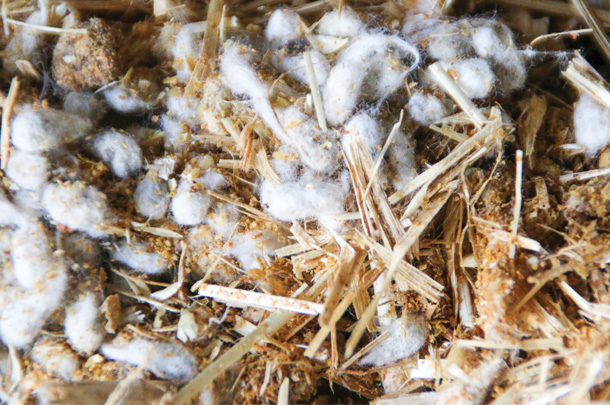Looking at feed ingredients in terms of their nutritive value helps nutritionists and producers formulate rations with what’s available and economically feasible. Since feed ingredients often contain more than one type of nutrient – for example, fiber and protein – we must account for the value of both fiber and the protein when determining whether to include an ingredient in a ration. Because of these nuisances in the value of feedstuffs and the volatility of feed prices, it is important to watch how ingredients compare on a regular basis.
The current market
Producers have been experiencing a unique situation bringing some question marks to what acres and the market will look like for 2022.

“The markets have been extremely volatile in the past couple of years,” Larry Johnson, gin consultant and owner of Tactical Risk Advisors and Whole Cottonseed Advisory Council member, explains. “With the supply chain issues and other logistical challenges, producers of agricultural products, including dairy operations, are experiencing many financial challenges. Increased demand for renewable fuels, increased fat prices and inclement weather has impacted forage supplies in various parts of the country.”
All these factors have brought some strong feed prices. Looking at Wisconsin November 2021 prices, one feed ingredient that stands out is tallow. Compared to the five-year average, this fat source has about doubled in price (Figure 1).

Alfalfa hay has a similar, but less extreme, trend with price due to this year’s inclement weather, causing the quality and supply to be more volatile. These two situations make two important nutrients, fiber and fat, much more costly in the ration.
In contrast, whole cottonseed is increasing its value thanks to its nutrient composition and the recent cotton harvest.
“U.S. growing conditions were friendlier this crop year, and the USDA forecasts U.S. cotton production to be 25 percent higher than one year ago. This suggests a significant boost to the volume of whole cottonseed available to cattle producers,” Jon Devine, senior economist for Cotton Incorporated, says. “The additional production suggests whole cottonseed supply will be more readily available, and that could help stabilize prices for use in cattle rations.”
Evaluating rations by nutritive value
So how can a producer navigate this marketplace? One way is to consider the nutritive value of feed ingredients in the ration. There are several tools available in the industry, like the Sesame software program, to perform this comparison. You can also refer to the “Market Watch – Feed” section of this publication to find additional information.
Another tool is FeedVal, which was developed at the University of Wisconsin and is free to use. This tool allows us to determine the value of nutrients in feed and then compare them to feed’s market price. It is important to note that the final result of the analysis is dependent on both the feeds and nutrients you analyze.
For example, after completing the FeedVal analysis on Dec. 6, 2021, for a dairy in northeast Wisconsin, the predicted value of whole cottonseed based on the crude protein (CP), neutral detergent fiber (NDF) and fat content was $398 per ton (Table 1).

Market price for cottonseed was $343 per ton for this dairy, ultimately meaning that cottonseed was undervalued based on the nutrients it contains.
Beyond the numbers
Although the analyses listed above are a great way to determine what ingredients will be economically suited to be in your ration, the numbers don’t say it all. There are multiple other ways cottonseed can add value to your rations.
Whole cottonseed has shown to be a favorable option in the current market because of its unique, triple-nutrient composition, bringing protein, fat and effective fiber to the table. If a cow is only going to eat 60 pounds of dry matter, you’ll want to give her the ingredients that provide the most concentrated forms of nutrients. For this reason, cottonseed is especially attractive when feeding the high-producing, early lactation dairy cow in negative energy balance (i.e., a cow in need of both energy and fiber).
Secondly, the effectiveness of the fiber in cottonseed is often an overlooked benefit. Lactating cows require effective fiber to assist in buffering the rumen through rumination as well as playing an important role in the passage rate of feed out of the rumen. Many dairies may use straw or other forms of effective fiber in this regard. Unlike straw or hay, cottonseed requires no further processing or grinding once it is on your farm.
Questions to bring to the table
When looking to change rations, there are a few questions to discuss with your herd’s nutritionist:
- What is the production level of your herd?
- How does the price of cottonseed compare to the value of other feeds in your market?
- Is your forage inventory constricted?
- Do you have the ability to handle and store the product to minimize shrink?
- What other costs are there to consider (e.g., transportation costs, storage costs/space, etc.)?
It’s recommended to watch the market, lock in favorable prices when available and work with your herd’s nutritionist to formulate the ration to fit your operation’s needs. ![]()
PHOTO 1: Whole cottonseed and considerations when evaluating rations while navigating high feed prices in 2022.
PHOTO 2: Cows eating cottonseed. Photos courtesy of Whole Cottonseed Advisory Council.
-
Trent Dado
- Independent Nutritionist and Whole Cottonseed Advisory Council Member
- Email Trent Dado











